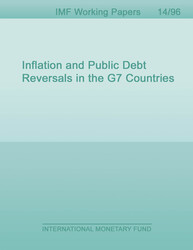
Inflation and Public Debt Reversals in the G7 Countries
This paper investigates the impact of low or high inflation on the public debt-to-GDP ratio in the G-7 countries. Our simulations suggest that if inflation were to fall to zero for five years, the average net debt-to-GDP ratio would increase by about 5 percentage points over the next five years. In contrast, raising inflation to 6 percent for the next five years would reduce the average net debt-to-GDP ratio by about 11 percentage points under the full Fisher effect and about 14 percentage points under the partial Fisher effect. Thus higher inflation could help reduce the public debt-to-GDP ratio somewhat in advanced economies. However, it could hardly solve the debt problem on its own and would raise significant challenges and risks. First of all, it may be difficult to create higher inflation, as evidenced by Japan's experience in the last few decades. In addition, un-anchoring of inflation expectations could increase long-term real interest rates, distort resource allocation, reduce economic growth, and hurt the lower–income households.
Publication date: June 2014
ISBN: 9781498369954
$18.00
Add to Cart by clicking price of the language and format you'd like to purchase
Available Languages and Formats
| English |
Prices in red indicate formats that are not yet available but are forthcoming.
Topics covered in this book
This title contains information about the following subjects.
Click on a subject if you would like to see other titles with the same subjects.
Economics- Macroeconomics , Economics / General , International - Economics , Inflation , debt drisis , G7 , public debt , soverign debt
Summary
Copyright © 2010 - 2025
Powered by:
AIDC



